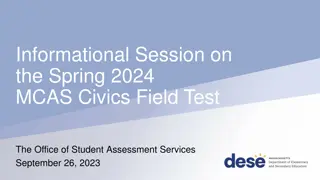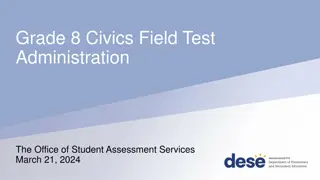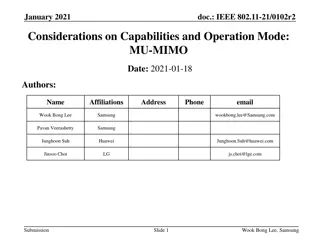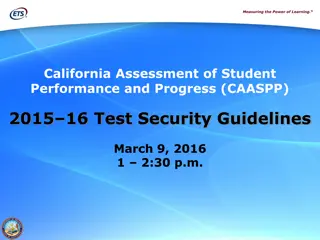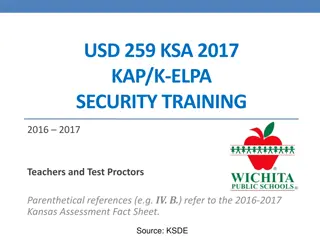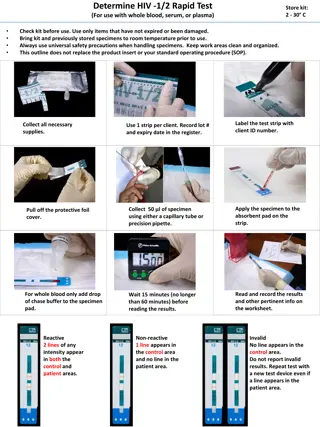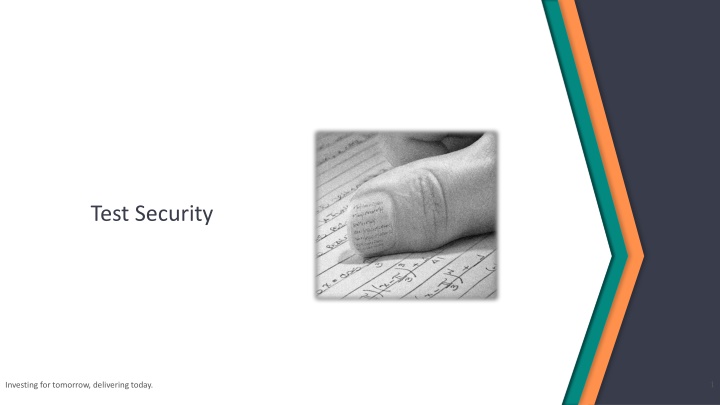
Investing for Tomorrow: Ensuring Test Security and Integrity
Learn about the importance of test security in standardized testing, examples of irregularities to watch out for, and how to prevent testing irregularities to maintain the integrity of assessments for students.
Download Presentation

Please find below an Image/Link to download the presentation.
The content on the website is provided AS IS for your information and personal use only. It may not be sold, licensed, or shared on other websites without obtaining consent from the author. If you encounter any issues during the download, it is possible that the publisher has removed the file from their server.
You are allowed to download the files provided on this website for personal or commercial use, subject to the condition that they are used lawfully. All files are the property of their respective owners.
The content on the website is provided AS IS for your information and personal use only. It may not be sold, licensed, or shared on other websites without obtaining consent from the author.
E N D
Presentation Transcript
Test Security 1 Investing for tomorrow, delivering today.
Test Security Test security refers to: Test security practices: Who has access to secure test materials Protects the student. What students can see and hear while testing Protects the staff. Protects the test. What resources students can acess while testing Protects you.
Why is Security Important? So that student responses are a true representation of what students know and can do So that assessment data used for accountability are valid and accurate So that test items can be used across years to allow for comparability So that investments of resources, time, and energy are protected
Standardized Administration Provide students no unfair advantages or disadvantages for students. Read and understand all manuals, directions, and scripts. Maintain strict adherence, with no deviation, to every element of directions/instructions.
Examples of Irregularities in Standardized Testing Academic content visible in the testing environment Student talking during testing Untrained Test Administrator (TA) TA leaving the testing environment (students unsupervised) Coaching Non-allowable resource Proving supports that are not aligned to the NMPED accommodations manual 5 Investing for tomorrow, delivering today.
Irregularities in Standardized Testing Any incident that results in a deviation from documented test administration procedures Two Types of Irregularities: Impactful: testing irregularities results in responses that do not accurately reflect what a student knows and can do. These tests are almost always invalidated. Non-impactful: testing irregularities do not result in invalidated tests. 6 Investing for tomorrow, delivering today.
How Do We Prevent Testing Irregularities? Active Monitoring before, during, and after test administration.
Paper-Based Test (PBT) Materials Storage Must be locked and secured by STC/DTC Daily accountability TAs sign out and check in materials, including student testing tickets, before and after testing Reproduction of test materials is prohibited.
Computer-Based Test (CBT) Security Prepare the room so that no student can view another student s computer screen. Supervise students at all times. No cell phones or other unapproved electronic devices. No talking during testing. Do not share user names or passwords. Destroy used scratch paper at the end of the test. Follow all security policies and test administration protocols.
Reporting a Testing Irregularity 1. School personnel and proctors shall report a testing irregularity to the DTC within 24 hours 2. Report to PED by telephone/e-mail within 3 days. 3. DTC conducts an investigation to determine whether incident is impactful or non-impactful. Does a student test need to be invalidated? 4. The PED Testing Irregularity Reporting form should be completed in the PED Test Coordinator Portal with a recommendation as to whether or not the assessment should be invalidated within ten days.




